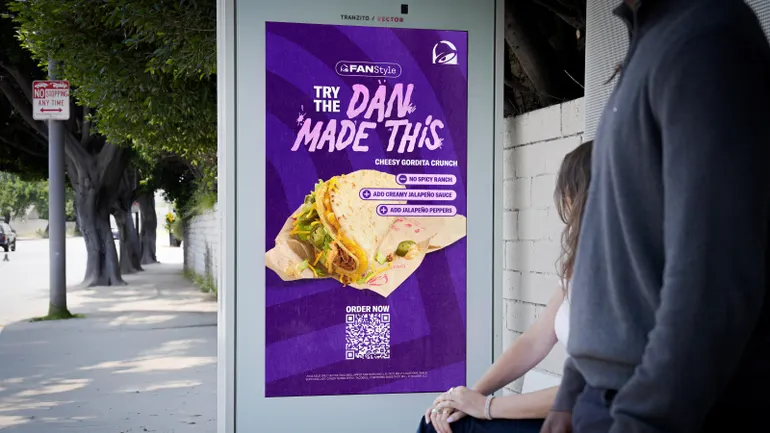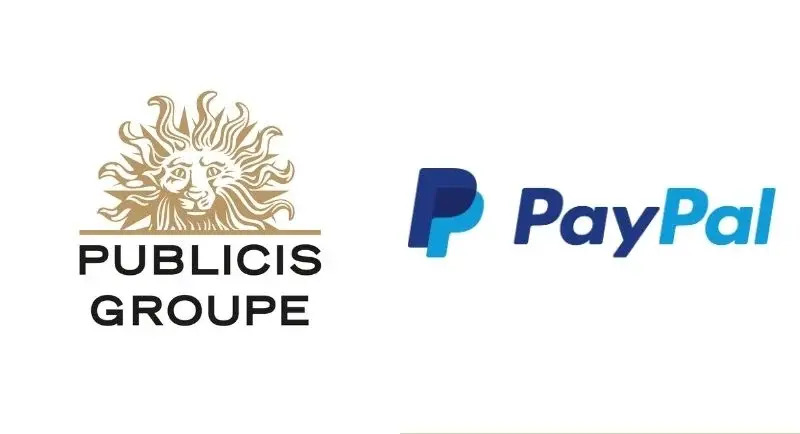- AD150
- Posts
- Analyzing 50K Impressions & 30 Newsletters - What Gets C-Suite Insurance Leaders to Open & Click?
Analyzing 50K Impressions & 30 Newsletters - What Gets C-Suite Insurance Leaders to Open & Click?
Disruption, urgency, and profit-momentum drive opens—here’s what resonates most with senior insurance decision-makers.
Good morning, ! This week we're unpacking the evolving playbook of B2B advertising in 2025: short-form video is stealing the spotlight, urgency-driven messaging is turning clicks into leads, and smart marketers are tapping into the emotional triggers that move the C-suite—disruption, risk, and revenue upside. From IBM’s cyber-resilience push to Apollo.io’s punchy video ads (and the subject lines execs can’t scroll past), we’re spotlighting the formats, messages, and platform bets turning attention into action.
Join 50+ advertisers who reach our 400,000 executives: Start Here.
Know someone who would love this? Pass it along—they’ll thank you later! Here’s the link.
AUDIENCE DATA DIVE
What Gets Insurance C-Suite Readers to Open?
After analyzing 30+ newsletters and tens of thousands of impressions, one trend stands out:
C-suite insurance leaders open content that highlights disruption, urgency, or profit-driven market shifts — especially when framed with clarity, asset-backed relevance, and real-world growth potential.
High-Performing Traits
The best-performing subject lines consistently shared three features:
1. Real, fast-moving trends tied to revenue growth or risk
Think market booms, underserved segments, or evolving customer behaviors.
Examples:
“The Surprising Boom Of Lost Luggage Insurance” – 80.57% open rate
“Fine Art’s Unstoppable Insurance Market” – 84.51%
“Skipping The Dentist: The Coverage Gap Insurers Must Fill” – 83.94%
2. Specific use cases or tangible coverage
Subject lines that referenced concrete sectors (like marine, cyber, EVs, or luxury goods) outperformed broader/abstract ones.
Examples:
“From Ferraris to Furniture: The Luxury Insurance Play” – 84.69%
“From Optional to Essential: Cyber Cover Grows Up” – 83.72%
3. Human or economic framing of macro forces
Articles that implied direct business consequences (productivity, retirement shifts, infrastructure gaps) attracted more attention than technical or abstract headlines.
Examples:
“Insurance: The Invisible Force Steering Our Economy?” – 79.62%
“65+ Boom: Meet The New Frontier of Insurance Innovation” – 40.58% (strong, but lower relative)
What Didn’t Land as Well
Innovation-only framing underperformed unless paired with urgency or financial payoff.
“InsurTech Hype Deflates—Did We Finally Sober Up?” – 15.81%
“Monday Must-Read Memo” – 33.24%
“What Your Insurance Pricing Model Missed, And Why It Still Matters” – 27.87%
Strategic Implications for Insurance C-Suite Content
If you want to consistently engage executive readers in insurance, focus on what signals disruption or money-in-motion:
High-Impact Themes:
Untapped or fast-growing markets
E.g., luggage, dental, fine art, older consumers
Coverage gaps and risk urgency
Missed pricing models, cyber exposure, productivity losses
Tangible verticals with luxury or infrastructure weight
EVs, offshore energy, marine, real estate, furniture
Go-Forward Content Formula
For your headlines:
Lead with the asset or risk ("Luxury Insurance," "Lost Luggage," "Cyber Gaps")
Add a business or behavioral trigger ("Boom," "Unprotected," "Deflates")
Show economic consequence or capital potential where possible
AD INTEL
B2B Services Outspend Product Marketers by 40% in 2025

New survey data reveals a widening gap in marketing investment between B2B business models, with services companies allocating 9.0% of total revenue to marketing in 2025—compared to just 6.4% for product-based peers. The 40% difference reflects deeper reliance on brand trust, long-cycle nurturing, and content-driven demand generation in services-led go-to-market strategies.
The findings come from the latest edition of The CMO Survey, conducted by Duke, Deloitte, and the AMA, highlighting how B2B services companies continue to prioritize marketing as a strategic growth lever—even amid uncertain economic conditions. In contrast, B2B product firms appear more focused on leaner models, channel partnerships, or product-led growth motions.
The divergence underscores how business model impacts not just messaging, but total budget commitment to brand and performance media. As AI and automation compress the cost of execution, the gap may widen further depending on how each model values top-of-funnel investments.
For marketers, the takeaway is clear: marketing's role in revenue growth looks very different depending on the product–service mix. Aligning spend with complexity, deal size, and trust-building needs is key. (More)
THE FUNNEL REPORT
Why Many B2B Content Strategies Fall Short—and How to Fix Them

While content is a cornerstone of B2B marketing, many strategies fail to deliver their full potential. Recent data reveals the top reasons why: 42% of marketers report a lack of clear goals, 39% say content isn’t tied to the customer journey, and 35% admit their approach isn’t data-driven. Other common issues include weak audience research and an emphasis on quantity over quality.
These gaps undermine content’s ability to guide buyers effectively through the funnel—from awareness to decision. Without clear objectives, marketers can’t measure success or optimize. Content that isn’t mapped to distinct funnel stages risks losing leads, while ignoring data means missed chances for personalization and iterative improvements.
To boost funnel performance, marketers should set stage-specific goals, align content with buyer needs, and leverage audience insights to refine messaging continually. Prioritizing quality over volume and creating content that nurtures leads at every step will accelerate conversions and drive sustainable growth.
In today’s complex B2B landscape, effective content isn’t just nice to have—it’s essential to moving prospects smoothly through the funnel and ultimately closing deals. (More)
BUDGET SHIFTS
B2B Marketing Budgets Trend Toward Long-Term Growth in 2025

B2B marketing budgets are inching upward, even as AI-driven disruption and macroeconomic uncertainty loom large. According to recent industry data, 48% of B2B marketers report budget increases over the past year, with the majority of those (58%) seeing growth in the 10–20% range. While not monumental, this measured upswing reflects a climate of cautious optimism—most teams are gaining resources, but the trajectory is steady rather than dramatic.
Where Is the New Budget Going?
The biggest slice still goes to paid advertising, commanding a relative share of 9.5 out of 10. It remains the default choice for quick wins and clear ROI attribution, keeping it firmly at the top of budget plans. But spending habits are evolving, and spend alone doesn’t guarantee effectiveness.
Notably, SEO (8.5) and content marketing (8.0) have climbed into prime positions, not just in budget allocation but in performance perception. These owned, long-term channels are now viewed as more effective growth drivers by many B2B teams, prompting a more diversified investment strategy. (More)
BUYER’S ROOM
Marketers Double Down on Millennials and Gen Z

Media buyers are zeroing in on younger audiences—especially Millennials and Gen Z—as brands work to future-proof their relevance. According to our latest survey, over 70% of marketers plan to target Millennials in 2025, with Gen Z not far behind. Meanwhile, spend on Gen X and Boomers continues to decline, with interest in Baby Boomers down 30% year over year.
This generational shift isn’t just demographic—it’s strategic. Younger audiences have outsized influence on both B2C and B2B decisions, especially in tech, mobility, and lifestyle categories. But they’re also harder to impress, with high expectations for brand values, design, and authenticity.
What buyers are doing:
• Reallocating spend toward creative formats that resonate with digital natives—think TikTok, carousels, and creator-driven media
• Retiring outdated personas and building value-driven messaging tied to sustainability, equity, and innovation
• Using audience trend data to future-cast brand positioning for the next decade
See the trend in action
Jaguar revamped their brand in 2024 to reach Gen Z and Millennial buyers and lean into their new electric vehicle (EV) lineup. The message? Environmental values, bold design, and a willingness to break tradition. While the campaign sparked mixed reactions, it succeeded in re-inserting Jaguar into the cultural conversation. (More)
CREATIVE THAT CONVERTS
The Power of Short-Form Video in B2B Ads
Short-form video is reshaping B2B marketing on LinkedIn in 2025, driving significantly higher engagement compared to static content. LinkedIn’s Creative Labs research shows cinematic, narrative-driven videos generate 129% more engagement, while short “real talk” videos increase dwell time by 103%. Videos with authentic emotion see a 78% lift in engagement, highlighting the power of genuine storytelling.
Brands like EmbedSocial and Apollo.io exemplify this trend. EmbedSocial’s 1-minute user-generated demo and Apollo.io’s 32-second cold-calling tutorial use concise narratives and bold captions optimized for silent, mobile-first viewing, resulting in spikes in demo requests and pipeline growth. Hootsuite’s playful 45-second “multiple character” video addressing social media KPIs drove organic shares and outperformed previous campaigns.
LinkedIn video posts now drive up to 3x more engagement than text or image posts, with B2B buyers retaining 95% of a message when conveyed via video versus just 10% through text.
To succeed, B2B marketers should create tightly focused videos that:
Open with an immediate hook
Address a single pain point
Provide a clear solution
Conclude with a strong call to action
...all while leveraging LinkedIn’s growing video-first ecosystem.
CASE STUDY
IBM Business Resiliency Services’ “Every Second Counts” Campaign
IBM Business Resiliency Services launched a focused campaign to underscore the urgency of rapid recovery from cyber disruptions. Over six weeks, the campaign leveraged authentic video storytelling grounded in real-world scenarios from finance and logistics companies, highlighting the costly impact of downtime—more than $200,000 per hour according to IDC research.
The campaign activated across Facebook, Twitter, and LinkedIn using trailers, GIFs, and social posts that directed IT leaders to a dedicated landing page featuring full videos and authoritative research from IDC and the Ponemon Institute. Retargeting nurtured prospects with educational content, encouraging lead capture and engagement at industry events hosted by Gartner, DRJ, AWS, and IBM.
Results included 682,000 LinkedIn impressions with 238,000 engagements (50% high-quality leads), 4.78 million Facebook impressions paired with 500,000 engagements, and 195,800 organic social impressions driving nearly 3,000 clicks. Site engagement reached approximately 17%, reflecting strong audience interest.
This campaign highlights the power of combining authentic, data-driven storytelling with strategic multi-channel promotion and retargeting. Its success reinforces the value of credible, urgent messaging that resonates deeply with IT decision-makers managing cyber risk. (More)
INTERESTING ARTICLES
"The more I lose, the more they believe they can beat me. But believing is not enough, you still have to beat me."
Roger Federer




